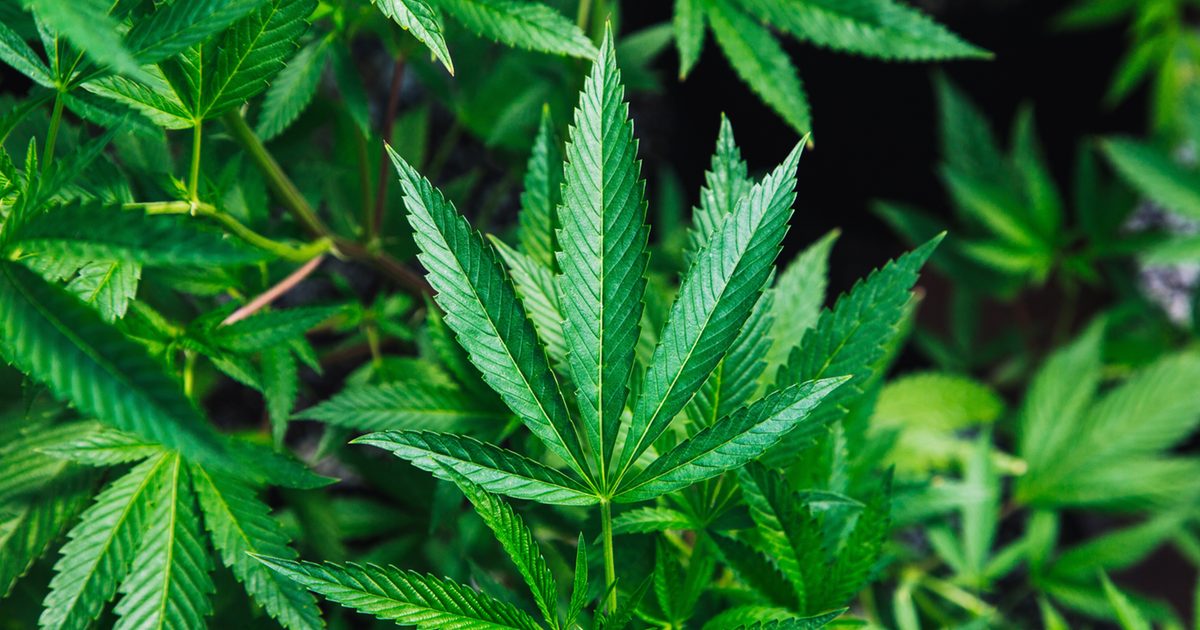Listen on: Apple Podcasts | Spotify
No doubt, you’ve heard friends and co-workers talking about hemp oil and CBD oil a lot lately.
I predict the Endocannabinoid System will be the most talked-about area of health and fitness over the next decade, and the focus of fascinating research findings. That might sound like a bold statement, since most people don’t even know what it is.
In the event you’re wondering if the endocannabinoid system is just about weed, it’s not.
Although the term endocannabinoid system has an obvious connection to cannabis, or marijuana, the system is more important than Mary Jane herself.
In this guide, I’ll first address what the endocannabinoid system is, and then discuss how you influence it with lifestyle, nutrition, and exercise.
As this is an emerging area of research, we still have much to learn. Nonetheless, what we know today is more than fascinating.

Feel Better Fast. Guaranteed.
Energy+, EDGE, and MentaBiotics make up the Happy Juice supplement stack, with ingredients clinically proven to:
- decrease anxiousness scores by 55%
- decrease irritability scores by 60%
- decrease fatigue by 64%
- decrease anger 54%
- decrease tension by 45%
- decrease confusion by 43%
- decrease overall distress by 49%
- increase good bacteria by 70%
- decrease negative mood by 105%
- increase positive mood by 211%
Two things worth noting as we begin:
- I’ve tried to avoid getting too technical to make this understandable by almost anyone. If you like to get extra “nerdy,” check out the references at the end of the article.
- To make this article flow better, I’ll use “endocannabinoid system” and ECS interchangeably.
What is the Endocannabinoid System?
As a “system” the endocannabinoid system is different from other systems of the body, such as the nervous, digestive, or endocrine systems.
It’s easy to envision your digestive system: your mouth, esophagus, stomach, small and large intestine, and that final orifice that sounds like the seventh planet from the sun.
However, the endocannabinoid system spreads across the entire body. It’s made up of chemical messengers (cannabinoids) and receptor sites (cannabinoid receptors). Based on the activity of the cannabinoids with the cannabinoid receptors, the ECS directs other systems in your body to maintain balance, or homeostasis.
Had it not been for the controversy and curiosity surrounding cannabis, the endocannabinoid system might never have been discovered.
People have used cannabis medicinally for about 4700 years, but it wasn’t until 1964 that scientists identified the first chemical in cannabis; tetrahydrocannabinol, or THC. THC is the cannabinoid that makes you high, and is only one of more than 80 cannabinoids in cannabis.
In 1990, scientists discovered the first receptors of the endocannabinoid system. They called the first cannabinoid receptors CB1, which are primarily located in the nervous system. Later, they discovered another receptor, called CB2, found in the immune system and many other tissues.
The ECS affects almost every area of the mental and physical wellbeing in the body and mind, making it a true “mind-body system.”
You might also like to read Essential Oils For Fitness: Research, Anecdotal Evidence, Experimentation.
What Are Cannabinoids?
Cannabinoids are chemicals that act on the cannabinoid receptors.
Endocannabinoids are cannabinoids produced by the body on its own, following the metabolism of arachidonic acid (AA) and the omega-3 fatty acids DHA and EPA. The two most well-known endocannabinoids are anandamide and 2-Ag. However, researchers have also discovered others, including NADA, virodhamine and noladin ether. Little is known about them because they haven’t been well-studied.
The endogenous cannabinoid system—named for the plant that led to its discovery—is one of the most important physiologic systems involved in establishing and maintaining human health. Endocannabinoids and their receptors are found throughout the body: in the brain, organs, connective tissues, glands, and immune cells. With its complex actions in our immune system, nervous system, and virtually all of the body’s organs, the endocannabinoids are literally a bridge between body and mind. By understanding this system, we begin to see a mechanism that could connect brain activity and states of physical health and disease.
-Editor’s Note, Cerebrum, November 5, 2013
Plants also produce chemicals that either act like endocannabinoids, or act on the body’s production of cannabinoids. They’re called phytocannabinoids, which you can consume, inhale, or apply topically to activate the ECS.
Cannabis contains the most cannabinoids of any single plant, though some of the essential oils of other plants also contain many phytocannabinoids.
| Cannabinoid | A classification of compounds that act on the endocannabinoid system. |
| Endocannabinoid | Compounds produced by the body itself, which control most aspects of the body’s metabolism, including metabolic rate, appetite, digestion, inflammation, stress response, and more. |
| Phytocannabinoid | Cannabinoids found in plants and spices. Most phytocannabinoids were first discovered in cannabis, but many of them are found in other plants, and some phytocannabinoids not found in cannabis do still act on the endocannabinoid system. |
What Does the Endocannabinoid System Do?
The following table outlines some of the ways the endocannabinoid system impacts your health.
| Effects of the Endocannabinoid System | ||
| Appetite and food intake | Metabolic rate | |
| Bone health | Fertility | |
| Immune function | Inflammation | |
| Mood | Memory | |
| Experience of pain | Skin health | |
| Sleep | Stress Response | |
| Brain plasticity | Release of emotional trauma | |
| Maintenance of muscle | ||
That’s quite a list of responsibilities, isn’t it?
In essence, the ECS gets your body and mind to relax, eat, sleep, forget, and protect itself.
When the ECS works well, we feel happy, energized, and can combat pain and disease. When the ECS isn’t functioning well, we are more likely to experience dis-ease.
The table below shows some of the most common problems related to endocannabinoid system dysfunction.
| Diseases Associated with Endocannabinoid System Dysfunction | ||
| Migraine Headaches | Fibromyalgia | |
| Infant “Failure to Thrive” Syndrome | Schizophrenia | |
| Multiple Sclerosis | Irritable Bowel Syndrome | |
| Huntington’s Disease | Parkinson’s Disease | |
| Anorexia | Chronic Motion Sickness | |
To support the effectiveness of the endocannabinoid system, you can:
- Stimulate the production of endocannabinoids
- Decrease the breakdown of endocannabinoids, making more available to your receptors
- Improve the function of the endocannabinoid receptors
Not surprisingly, you affect the ECS through your lifestyle, exercise, nutrition, and supplement choices. Many drug therapies also affect the ECS, but I won’t get into them in this article.
Research shows cannabinoids help to break your connection to past traumatic events, and mentally or emotionally let go of them. In that regard, it truly is a mind-body system. The endocannabinoid system affects neural plasticity, the brain’s ability to organize neurons, which is important for learning and memory.
Phytocannabinoids: The Power of Plants
Scientists have discovered more than 100 phytocannabinoids. Of the more than 400 compounds in cannabis, at least 80 are cannabinoids. Many of the cannabinoids are found in other plants as well.
Only a small percentage of cannabinoids have been studied, but the more they’re studied, the more you’re left marveling at the medicine made by Mother Nature.
The Entourage Effect
Research suggests the real benefit from cannabis, or other plants with cannabinoids, comes from their “entourage effect,” a synergy when used together.
For example, when taken alone THC gets you stoned, and it can also cause short-term memory loss and other side effects. However, people who use marijuana, which contains the rest of the cannabinoids in the plant, experience a similar high, but fewer such side effects since they don’t take THC alone. They get the entourage of other cannabinoids, such as CBD, beta-caryophyllene and alpha-pinene, which offset THC’s side effects.
The “entourage effect” isn’t something unique to cannabis. Essential oils contain dozens, if not hundreds of different constituents which act together, providing health-promoting effects, as well. This is why individual constituents found in essential oils sometimes have undesirable side effects, whereas using the whole oil does not.
The Most Researched Phytocannabinoids
Plants with the highest concentrations of cannabinoids inlude:
- Cannabis
- Copaiba
- Black pepper
- Broccoli
- Carrots
- Clove
- Cinnamon
- Echinacea
- Ginseng
Of course, you won’t get a therapeutic dose from a serving of broccoli or carrots. Instead, you’d need the extract or the oil of a plant, herb, or vegetable for a therapeutic dose.
Phytocannabinoids affect the ECS in one of two ways. They:
- Interact with the cannabinoid receptors, which trigger metabolic effects
- Decrease the breakdown of cannabinoids, making them available for use longer
Alkylamides: Alkylamides are found in Echinacea. They support immune function, which explains Echinacea’s popularity around cold season.
ß-Caryophyllene: Beta-caryophyllene helps maintain a healthy inflammatory response, digestive and skin health, and liver function.
Most of the ß-caryophyllene in cannabis is found in the leaves and flowers, so marijuana users get a good dose of this cannabinoid. But, hemp oil is made with the cannabis stalk, not the leaves and flowers, so hemp oil lacks beta-caryophyllene.
Copaiba, black pepper, clove, rosemary, hops, caraway, oregano, basil, lavender, and cinnamon are also excellent sources of ß-caryophyllene.
In fact, copaiba is the most concentrated source of ß-caryophyllene you’ll find in the plant world.
Cannabichromene (CBC): CBC, mainly found in cannabis, supports a normal inflammatory response, brain function, skin health, and digestive function.
Cannabidiol (CBD): CBD is the most concentrated cannabinoid in hemp. Next to THC, it’s been studied the most as well, which has led many companies to sell CBD oil on its own. While CBD oil may offer a number of health benefits, it lacks the complimentary cannabinoids found in a high-quality hemp oil formula. A high-quality CBD oil product will combine CBD with complimentary essential oils to create the entourage effect.
CBD has been shown to relieve pain, is a neuroprotective antioxidant, reduces feelings of stress and anxiety, and supports normal inflammatory levels and restful sleep. It has also been shown to stimulate the formation of new brain cells.
Cannabigerol (CBG): CBG is found in higher concentrations in the hemp variety of cannabis than in marijuana. Research shows it supports immune function, skin health, nervous system function, and positive mood. CBG also inhibits GABA uptake, which can promote relaxation.
Diindolylmethane (DIM): You produce Indole-3-Carbinol when you eat cruciferous vegetables like broccoli, Brussels sprouts, cabbage, and cauliflower. Indole-3-Carbinol converts to DIM, which supports immune function, and also helps maintain normal estrogen levels by blocking the conversion of testosterone to estrogen.
You can get DIM or Indole-3-Carbinol as a nutritional supplement.
Tetrahydrocannabinol (THC): Along with making you high and happy, THC relieves pain, relaxes muscle, and calms muscle spasms. It also acts as a bronchodilator, neuroprotector, and is 20 times more potent than aspirin and twice as strong as hydrocortisone at reducing inflammation.
Unfortunately, those health benefits don’t come without the high, but the other phytocannabinoids offer a compelling list of health benefits, so you might not need THC anyway.
For those who suffer from irreversible chronic pain, epilepsy, or a number of other chronic diseases, it does present a powerful case for the medicinal use of marijuana. THC could also have some performance-enhancing effects when used in very low doses, especially for endurance athletes.
Terpenoids
Terpenoids are components of essential oils. So far, scientists have identified 15-20,000 of these constituents. More than 200 terpenoids are found in cannabis and are responsible for its distinct smell.
Monoterpenes, which are quite volatile, are often lost in a dried plant. They evaporate quickly. However, a high-quality essential oil contains high levels of monoterpenes, provided you keep the cap sealed. The loss of monoterpenes through drying increases the concentration of sesquiterpenes like caryophyllene.
Some of the monoterepenes found in cannabis include limonene, myrcene, and pinene. Again, these would be found in a plant oil, but not in the dried plant material.
Alpha-Pinene: Alpha-pinene is found in cannabis as well as many other plants. It gives certain plants their distinctive woodsy smell.
Alpha-pinene supports memory formation, normal inflammation levels, can act as a bronchodilator, and is also found in coniferous oils, cypress, frankincense, juniper, and helichrysum.
d-Limonene: d-Limonene is concentrated in the rinds of citrus fruits. Some research shows it has a calming effect on the mind, affecting serotonin and dopamine production. It supports the immune system, supports normal inflammatory levels, and gut health.
Myrcene: Myrcene supports normal inflammatory levels, is calming to the mind, relaxes muscles, and can relieve pain.
Outside of cannabis, myrcene can also be found in mangoes, hops, lemongrass, and thyme. If you’re in one of the states that allow recreational use of marijuana, and you’re not on a ketogenic diet, you might like to know that eating a mango 45 minutes before using marijuana enhances its effects.
Other Ways to Support The Endocannabinoid System
Not surprisingly, lifestyle, exercise, and nutrition choices enhance the effects of the endocannabinoid system.
Omega-3 Fatty Acids (Fish Oil): The average person gets plenty of omega-6 fats in the diet, but not enough omega-3s.
The omega-6 fat arachidonic acid (AA), and the omega-3 docosahexaenoic acid (DHA) are the two most prevalent fats in brain tissue.
While the average person gets plenty of omega-6, omega-3s are uncommon in the Western diet. However, they’re crucial in your diet.
Insufficient DHA can lead to cognitive problems, and inadequate eicosapentaenoic acid (EPA) can lead to lipid and metabolic issues.
You need enough DHA for the endocannabinoid system in the nervous system to function properly.
Since the ECS also functions in other tissues and cells throughout the body, higher EPA intakes could also influence the function of the endocannabinoid system.
Read more: Fish Oil: Why Your Body And Brain Benefit From Supplementing With Omega-3s.
Probiotics: Animal research shows that probiotics like Lactobacillus acidophilus can increase production of endocannabinoids. Some research indicates they can also directly impact the CB2 receptors in the gut.
Avoid Endocannabinoid Disruptors: Pesticides like chlorpyrifos and diazinon alter the endocannabinoid system. Endocrine disruptors like phthalates and plasticizers also cause dysfunction to the system.
Stress Management: Not surprisingly, chronic stress disrupts the endocannabinoid system.
Meditation, yoga, and deep breathing create a mild cannabinoid-mimicking effect. Of course, smoking dope helps some people chill out, but it’s not something I’d recommend.
Using other phytocannabiniods, such as hemp oil, citrus oils, rosemary, or frankincense, in combination with mind-body practices is an excellent combination for reducing feelings of stress and anxiety.
Weight Loss: Calorie restriction or fasting seems to improve endocannabinoid system function. The more your body fat levels improve, the better your ECS should function.
Although activation of the endocannabinoid system stimulates appetite, the use of phytocannabinoids, including marijuana, is associated with lower body weight.
The endocannabinoid system’s role in weight management still needs to be understood, but the early evidence does suggest phytocannabinods help support healthier body composition levels.
Exercise: Medium to high-intensity exercise increases endocannabinoid production. The ECS could be the cause of the “runner’s high” so many people experience during an extended bout of endurance activity.
Endocannabinoids could also be released in response to intense strength training.
The Best Way To Supplement With CBD Oil or Hemp Oil
Hemp and marijuana are actually the same plant, Cannabis sativa, but they’re cultivated differently.
Hemp is grown in a way where it produces minimal tetrahydrocannabinol (THC), the compound that gets you high and gives you the munchies. It is used for food, clothing, and the oil can now be extracted for medicinal benefit.
As a result, high-quality hemp oil contains many of the same therapeutic compounds found in marijuana without making you high. But hemp oil isn’t considered THC-free. Hemp oil is also low in some of the other key phytocannabinoids, such as ß-caryophyllene.
This leaves you with two options when it comes to a safe, legal, and therapeutic source of CBD:
- Hemp oil with minimal THC
- CBD oil complemented with other essential oils to create a “broad-spectrum” oil.
Beyond the CBD that’s in the bottle, the source is equally important to understand.
Hemp has a way of pulling toxins and chemicals out of the soil and into the plant. As a result, cheap CBD oil may contain numerous compounds you don’t want to put in your body.
Just as with essential oils, it’s critical that the hemp is grown in high-quality, organic soil, and in an environment that minimizes pests and disease. For example, the CBD oil I use and recommend is grown in the arid climate of Colorado.
What to Look For In a High-Quality CBD Oil
Now that you know the importance of the endocannabinoid system, and the value in supporting it with diet, exercise, lifestyle, supplements, and CBD oil, you might wonder what you should look for in a high-quality CBD oil.
Here’s my recommendation. Look for:
- Sourced from hemp grown with organic farming practices, in an arid environment
- Extraction with CO2 to avoid the use of harsh chemicals
- Tested for purity and potency
- Third-party tested to ensure it contains 0% THC
- CBD combined with the right essential oils to create the entourage effect
You’d think with all of the CBD brands out there today, you’d have a lot of good options to choose from. Don’t be fooled. Just like with nutritional supplements, there’s a wide variety of quality in CBD products.

Feel Better Fast. Guaranteed.
Energy+, EDGE, and MentaBiotics make up the Happy Juice supplement stack, with ingredients clinically proven to:
- decrease anxiousness scores by 55%
- decrease irritability scores by 60%
- decrease fatigue by 64%
- decrease anger 54%
- decrease tension by 45%
- decrease confusion by 43%
- decrease overall distress by 49%
- increase good bacteria by 70%
- decrease negative mood by 105%
- increase positive mood by 211%



